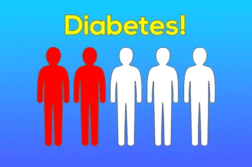ST. LOUIS, Mo. (Ivanhoe Newswire) — Over one million Americans are living with HIV, and one in eight doesn’t know they are infected. There is no cure, but there are almost 30 drugs that people can take to help them stay healthy, and now there is one FDA-approved drug that people at risk for HIV can take to prevent them from becoming infected.
Thirty-five-year-old Dave Rueschhoff has been an outspoken member of the gay community in St. Louis his entire adult life.
Rueschhoff has always taken steps to keep himself healthy. These days that includes a regular dose of prevention.
“It’s one thing in addition to condom use, and other safe sex practices that can help mitigate your risk and chance of getting HIV,” Rueschhoff said.
It’s called PrEP, pre-exposure prophylaxis. Two medicines combined into one pill: tenofovir and emtricitabine.
Rachel Presti, MD, PhD, Assistant Professor of Infectious Disease Medicine at Washington University School of Medicine in St. Louis told Ivanhoe, “They’re both medicines that we use all the time in people who are HIV infected, so we have a long, long, long experience with safety.”
In some clinical trials of PrEP researchers found the drugs were between 80 and 90 percent effective in preventing HIV transmission, as long as patients took the pill as prescribed, at least four times a week.
Dr. Presti said despite new advances more than 37,000 Americans are diagnosed every year.
Rueschhoff said, “I have many of friends of mine that have unfortunately been diagnosed with HIV. When I tell them about PrEP, they say, ‘I wish I knew. I wish I knew there was something like that out there.’”
Dr. Presti says PrEP does not work on patients who are HIV positive, only those who test negative for the virus. PrEP is covered by some insurances and for others, there is a program sponsored by the drug maker, Gilead, to provide the medication at low or no cost.
Contributors to this news report include: Cyndy McGrath, Field Producer; Roque Correa, Editor and Videographer.
Free weekly e-mail on Medical Breakthroughs from Ivanhoe. To sign up: http://www.ivanhoe.com/ftk
PrEP FOR HIV PREVENTION
REPORT #2407
BACKGROUND: It is believed that the human immunodeficiency virus (HIV) originated from contact with animal blood from hunting chimpanzees in the early 1900s. The first identified case of HIV in a blood sample was found in a man from the Democratic Republic of Congo in 1959, and the first case in the Midwest was found in 1968. Acquired immune deficiency syndrome (AIDS) became an epidemic in the 1980s and it was surrounded by the stigma that only homosexual men and heroin users carried the virus. It did not take long to learn that both men and women could contract and spread HIV and by 1995 AIDS became the leading cause of death for adults 25-44 years old. Today, more than 1.2 million people have HIV while men account for 67% of those diagnosed. Thankfully from 2005 to 2014, it was noted that HIV cases started to decline, but that does not mean this deadly virus will continue to dissipate unless extreme measures are taken.
(Source: http://www.healthline.com/health/hiv-aids/history)
THE STUDY: Recently a new drug called PrEP (pre-exposure prophylaxis) has been released for people who have a high risk of getting HIV. These high risk people include those who have a partner with HIV, gay or bisexual men who engage in anal sex without condoms, or anyone who engages in sex with a man or a woman with an unknown HIV status who are at substantial risk of HIV infection (such as those who inject drugs or have a bisexual male partner). Approximately 24.7% of men who have sex with men, 18.5% of people who inject drugs, and 0.4% of heterosexually active adults have the risk of getting HIV. Several placebo-controlled clinical trials beginning in 2010 have produced the statistics that, if taken consistently, PrEP reduced new HIV infections by 92% among men who have sex with men, 90% among heterosexual men and women whose partner has HIV, and 73.5% among persons who inject drugs. The drug goes by the name Truvada for PrEP and you can get it prescribed by your doctor if you meet the criteria for a person at high risk of contracting HIV. Unsurprisingly there are side effects to this drug like most other drugs, and those include stomach pains, nausea, lactic acidosis (too much lactic acid in your blood), liver damage, and worsening of hepatitis B if you already have it.
(Source: https://www.cdc.gov/mmwr/preview/mmwrhtml/mm6446a4.htm?s_cid=mm6446a4_w)
PRVENTING HIV: There are more ways than one to reduce the risk of getting HIV. Using condoms consistently and correctly can be highly effective. Engaging in less risky sexual behavior is another way to reduce risks. This not only includes using protection, but reducing the number of sexual partners you have, and being aware that anal sex is the riskiest type of sex to transmit HIV. If you think you may be at risk, talk to your doctor about PrEP and let them know immediately if you think you may have had a partner that is HIV-positive. Lastly, get tested for all sexually transmitted diseases at least once a year or if you are unsure about a recent sexual encounter.
(Source: https://www.aids.gov/hiv-aids-basics/prevention/reduce-your-risk/sexual-risk-factors/index.html)
* For More Information, Contact:
Rachel Presti, MD, PhD
Infectious Disease Medicine
Washington University School of Medicine in St. Louis
314-454-0058



